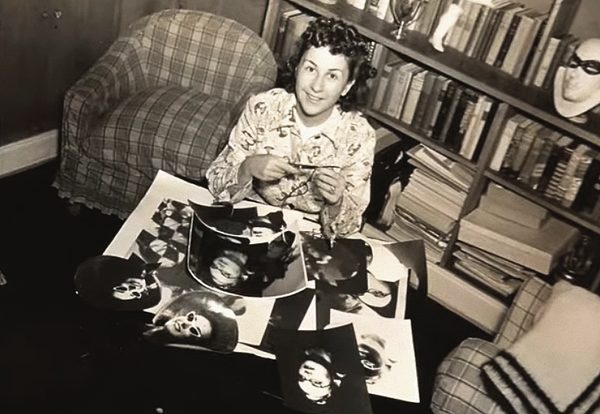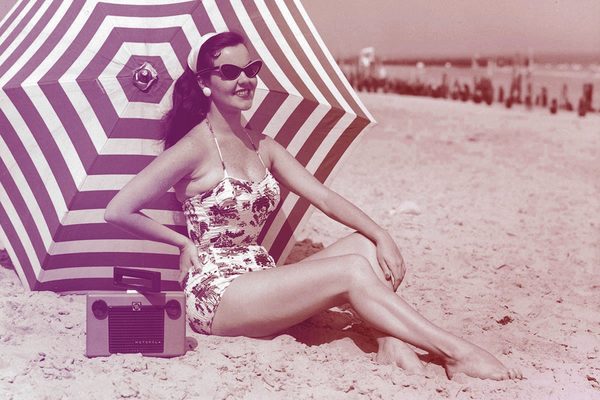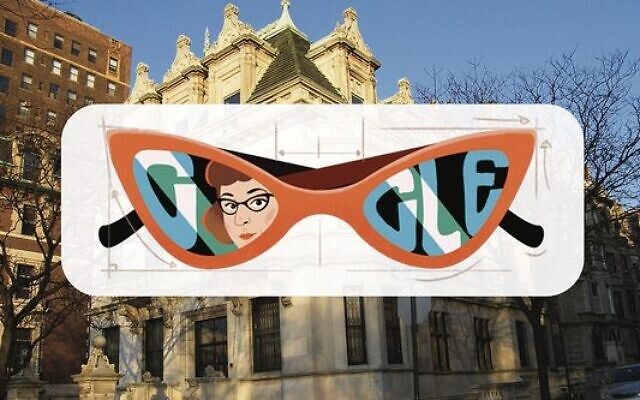A Jewish woman invented the cat-eye glasses
Her invention was rejected by many of the biggest optical companies of the day, who told her that they would call her back “whenever we need glasses for lunatic asylums”, she recalled in one interview.
(Kveller and JTA) – I love wearing glasses. Since I got my first pair in grade 2 and finally realised that I could see the world, or rather, that I couldn’t see the world without them, I have been obsessed. I’ve had bedazzled frames, bright red heart-shaped ones, tortoise shell (not real!) that transition into sunglasses and make me look all mysterious in the sun, but the true pinnacle of stylish glasses is, in my eyes, the cat-eye or harlequin glasses. They’re timeless and stylish; they feel like the eyewear of an empowered, cerebral, thrilling and, let’s be honest, sexy person.
That’s possibly because they were invented by one – Altina “Tina” Schinasi was a Sephardi Jewish icon: a single mother of two, four-times married, an Academy Award nominee, a sculptor, an artist and inventor. She rubbed elbows with Salvador Dali, Martin Luther King Jr (MLK) and Rosa Parks, and yes, she’s the woman who patented the cat-eye glasses.
As the story goes, one day in the 1930s, Schinasi walked past an optical store in New York, where she was born. There was a painting in the window, and on it, glasses frames that Schinasi thought were truly hideous. She remembered that famous Dorothy Parker line – “men seldom make passes at girls who wear glasses” – and like the true ingenue that she was, thought to herself: I could do better than this.

For the first time, somebody was thinking about how women deserved to feel good in the glasses that they wore – to look attractive, sophisticated, beautiful, to see and be seen confidently. Schinasi was inspired by the Comedia Dell’Arte harlequin masks she saw in Venice, because they “really beautify the face”, and as a sculptor and artist by training, she designed them out of cut paper first.
Her invention was rejected by many of the biggest optical companies of the day, who told her that they would call her back “whenever we need glasses for lunatic asylums”, she recalled in one interview. But walking into the Lugene Optical store in New York City, the owner happened on her designs and saw their brilliance. The rest was history.
Vogue and Vanity Fair writer Clare Boothe Luce got one of the first ever pairs, and in the decades after their invention, they were worn by big stars like Marilyn Monroe, Elizabeth Taylor, Peggy Guggenheim and iconic Jewish musician Lisa Loeb. In 1939, Schinasi won the Lord & Taylor Annual American Design Award for her invention.

That achievement would be enough to make anyone’s life remarkable, but when it comes to Schinasi, it was just the tip of the iceberg.
Schinasi was what one might call a nepo baby these days – and what romantics would call an heiress. Her father, Morris Schinasi, born Moussa Eshkenazi, a Jewish immigrant from Turkey, was a tobacco baron who started the Schinasi Tobacco company and made his fortune selling Turkish cigarettes and patenting his own cigarette rolling machine. He married Laurette Ben Rubi, the granddaughter of his business partner, a Jew from Salonica, Greece. The house Altina grew up in was a literal mansion on Riverside Drive designed by Carnegie Hall architect William Tuthill. She attended Horace Mann school, and then was sent to Dana Hall boarding school in Massachusetts, where she excelled in her studies and extracurriculars, but still felt othered by being one of just a handful of Jewish students.
When her father died in 1929, he left his fortune to her mother and sister, and also a great part of it to charity, including $100,000 to Jewish charities.
Schinasi wanted to make something of her life, to feel of use. She studied art under Samuel Alpert and got a job working on display windows on Fifth Avenue, where she worked with Salvador Dali. After divorcing her first husband, architect Morris Sanders – who was the father of her two sons, Terry and Dennis – Schinasi began studying under the tutelage of artist George Grosz, a German refugee who had had to leave the country for his anti-Nazi art.
After her cat-eye glasses took off and she sold her eyewear company, she moved to California, where she studied art and volunteered as an art therapist.
“I took a room in the house as my studio and put a sign on the door: ‘Do not come in unless there’s a catastrophe,’” she recalled.
While there, she decided to make a short film about her former teacher and the art that branded him an enemy of his home country.
George Grosz’ Interregnum, which came out in 1960, was a collaboration with Schinasi’s sons, both moviemakers. It went onto become an Academy Award nominee for best short film and won first prize at the Venice Film Festival.
After the success of her first foray into film, Schinasi decided she wanted to make a movie about Martin Luther King Jr’s March on Washington. She recruited writer John Oliver Killens to write the script and travelled with her third husband, Charles Carey, to Alabama to meet with MLK and other activists, including Parks and Ralph Abernathy. Yet despite MLK’s own interest in the movie, the project never managed to secure the funding needed to get off the ground.
During the Red Scare, Schinasi helped blacklisted Jewish film director John Berry avoid a congressional subpoena by hiding him in her Beverly Hills home.
Later in her life, Schinasi – who moved to Washington and then Santa Fe, New Mexico – invented her “chairacters”, utterly delightful chairs that had likenesses of people sculpted into them. It was while working on them that she met her fourth husband, Celestino “Tino” Miranda, to whom she remained married until her death in 1999 at age 92.
“I never thought I was a great artist at all. I’m not a great artist, but I knew I had a gift and a talent,” you can hear her say in the 2014 documentary Altina, directed by her grandson Peter Sanders and produced by her granddaughter, literary agent Victoria Sanders.
“My grandmother Tina was proud of her Jewishness, deeply affected by the rise of the Nazis and personally furnished 13 affidavits to enable Jewish refugees to enter the United States,” Peter told JTA in 2014.
Schinasi would’ve been 116 today earlier this month, with the Google Doodle celebrating her life on her birthday – August 4.
In a note from Google, the company wrote, “Happy birthday to the woman who was a visionary in more ways than one!”
Google also thanked Schinasi’s son Terry Sanders for his contributions to the project. In a note, Sanders wrote, “Happy Birthday, Tina! Thank you for your courage, kindness and inspiration. Much love, always,” and signed it on behalf of himself and Schinasi’s seven grandchildren: Victoria, Juliette, Peter, David, Eve, Jessica and Brittany.


comments